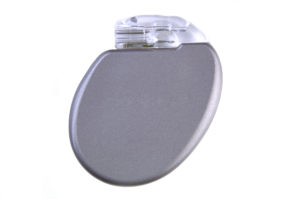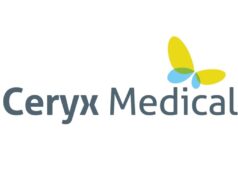 Primary implantable cardioverter-defibrillator (ICD) implantation may have an incremental benefit for patients who have ischaemic cardiomyopathy without heart failure symptoms. The findings, published in Heart Rhythm, indicate that these patients have a higher risk of appropriate ICD therapy compared to symptomatic patients, after adjustment for the competing risk of death.
Primary implantable cardioverter-defibrillator (ICD) implantation may have an incremental benefit for patients who have ischaemic cardiomyopathy without heart failure symptoms. The findings, published in Heart Rhythm, indicate that these patients have a higher risk of appropriate ICD therapy compared to symptomatic patients, after adjustment for the competing risk of death.
Avi Sabbag (Tel Aviv University, Tel Aviv, Israel), Mikael Glikson (Shaare Zedek Medical Center, Jerusalem, Israel) et al evaluated the incidence of ventricular arrhythmias, mortality rates, and appropriate device therapies by New York Heart Association (NYHA) functional class.
They say: “Our data indicate that after multivariable adjustment and controlling for the competing risk of death, over 30 months of follow-up the risk of receiving an appropriate ICD therapy is higher among patients with ischaemic cardiomyopathy and class I heart failure compared to patients with higher degrees of NYHA. These findings do not support the recent exclusion of this population in the ESC guidelines.”
In all, 1670 consecutive patients with ischaemic cardiomyopathy who were implanted with a primary prevention ICD were enrolled in the prospective national Israeli ICD Registry from 2010, and the risk for clinical and arrhythmic events assessed by NYHA class. The registry incorporates all 21 centres in the country, with prospective yearly follow-up initiated in July 2011. Inclusion criteria for the study population were a diagnosis of ICM by the enrolling centre, implantation of an ICD for primary prevention, and left ventricular ejection fraction (LVEF) ≤35%. Data on NYHA functional status, therapies, and death rates were collected at six-month intervals, with information on all-cause mortality obtained from the Israeli National Population Register.
Coprimary endpoints included the separate occurrence of a first appropriate ICD therapy and all-cause mortality in a competing risk analysis. Secondary endpoints included any first appropriate device therapy (antitachycardia pacing or shocks), inappropriate therapy, mode of death (categorised into cardiac or noncardiac), and rates of hospitalisation due to HF. Cardiac mortality was defined as death due to all cardiovascular reasons including worsening heart failure, acute coronary syndrome, arrhythmia-related mortality, ICD/cardiac resynchronisation therapy device (CRT-D)-related mortality, cerebrovascular accidents, or other cardiovascular events. Investigators calculated the total burden of recurrent appropriate device therapies per 100 person-years, and compared the groups using Poisson regression.
Of the 1670 patients with ischaemic cardiomyopathy, 317 (19%) did not have heart failure symptoms (NYHA I). The average age of participants was 66±10 years, 90% were male, and most had a history of myocardial infarction (87%). There were significant differences in baseline clinical characteristics between patients with and without HF symptoms. Patients with NYHA ≥II were older and had more comorbidities. They also received more intense medical therapy, including angiotensin-converting enzyme inhibitors, beta-blockers, and diuretics, although there were no differences between groups in the use of antiarrhythmic drugs. As recommended in current guidelines, only patients with NYHA ≥II and QRS ≥120ms received CRT-D devices.
A total of 107 patients died during follow-up, with the highest mortality rate among the the NYHA III–IV group (10.5% vs. 5.4% in NYHA I and 5.8% in NYHA II, log rank p=0.003). A competing risk analysis of the risk of appropriate ICD therapy by NYHA class found the cumulative risk of first appropriate therapy at 30-month follow-up was higher in patients without HF symptoms than in symptomatic patients (11% vs 9%, respectively, p =0.021).
Following multivariate analysis, NYHA I remained independently associated with a significant two-fold risk for appropriate ICD therapy compared to NYHA ≥II (hazard ratio [HR] 2.03, 95% confidence interval [CI] 1.28–3.24). No other covariates emerged as independent predictors of appropriate therapy, and the total burden of recurrent appropriate therapies was also higher among asymptomatic than symptomatic patients (38.2 vs. 27.9 therapies per 100 patient-years, respectively, p<.001)
Writing in Heart Rhythm, Sabbag, Glikson and colleagues say: “Our findings indicate that the arrhythmic risk of asymptomatic ICM patients with an implanted ICD for primary prevention is higher than in symptomatic patients, suggesting a possible incremental benefit of primary ICD therapy in ICM patients with NYHA class I symptoms.”
They add: “Clearly, the only possible benefit that may be derived from an ICD is delivery of appropriate treatment of a potentially lethal rapid ventricular tachyarrhythmia. Therefore, a defibrillator will be most beneficial in a person at high risk for such events. In contrast, among patients with more advanced HF symptoms, the risk of mortality due to HF may be higher. This may explain why ICDs are not as beneficial in patients with higher NYHA class. We also found a trend toward an increase in inappropriate therapies in NYHA I patients, which may be secondary to a more preserved conduction system in this group, thus allowing for higher ventricular response to atrial tachyarrhythmia.”









